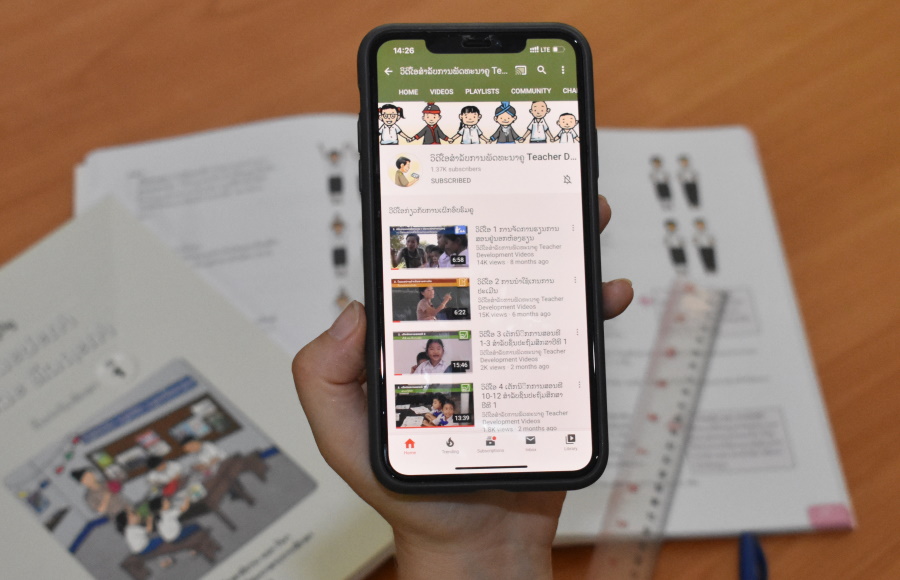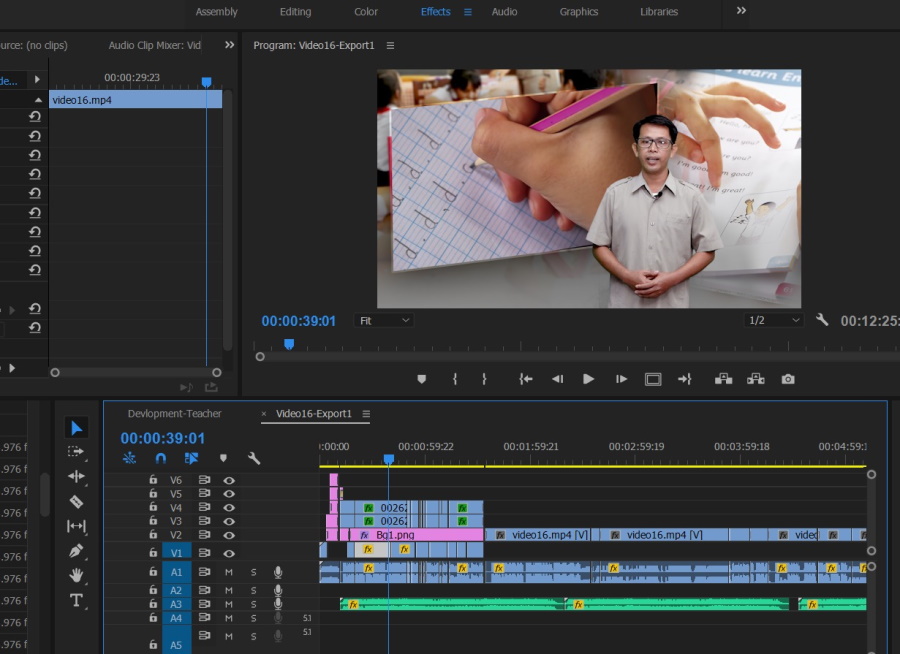When filming and editing studios are relocated at home
On 22nd April the teams from the E-Learning department of the Research Institute of Educational Sciences (RIES), the Inclusive Education Center (IEC) and the Australian funded program BEQUAL were busy filming the Sign Language dubbing for a new teacher development video. But then the lock-down was announced and they couldn’t return to the studio to finish the videos…
“Primary teachers and trainers use the videos for self-learning on the new curriculum teaching techniques and on active learning. With the new Grade 3 curriculum to be implemented in September, it was important that we found a way to continue the production of the videos during lockdown” explains Mr Outhit Thipmany, Deputy Director general of RIES. “We have had more than 1 million views on the dedicated “ວິດີໂອສຳລັບການພັດທະນາຄູ Teacher Development Videos” YouTube channel; this high audience score proves that the teachers highly appreciate the videos.”

“We were lucky as we had filmed the live demonstration scenes in the classrooms before PiMai. So, all the complicated footage was already with us” adds Mr Sayyakhone Panyathong, head of the digital media section of E-Learning. “One of the challenges was that we haven’t finished filming the Sign Language dubbing for two videos; so we filmed at home with a reduced team, only one cameraman and the Sign Language translator to comply with all COVID-19 prevention measures. We transformed the living room into a special effects’ studio with a big green curtain hung in the background. Our colleagues from Inclusive Education Center helped remotely with accuracy of translation; and then we modified the background during editing”.
Mr Bundith Inthaphothong from E-Learning team is the video editor. “Video editing is the final step in video production. My job is to blend images and sounds to make a video that represents the script and also captures the audience. 97% of teachers watching the videos on YouTube use their smartphones; and attention span is short on social media. So I focus on making a catchy edit, with a good rhythm so that viewers will get hooked. During the lockdown, I relocated my editing station from the office to my home and used digital platforms to receive inputs and comments from the other team members from RIES and BEQUAL. It was not always easy as video files become very large during the editing process and I needed good hardware and internet bandwidth.”
Despite the challenge of the lock-down and due to the inventiveness and resourcefulness of the production teams working from home, the teams successfully finalized two more videos. The first video shows what teaching an active learning classroom should look like and advises teachers how to implement this world-wide best practice pedagogical approach in their classroom. The second video covers key techniques for teaching English phonics in the new Grade 3 English curriculum starting in September.
You can find the new videos and many others under the YouTube Channel: ວິດີໂອສໍາລັບການພັດທະນາຄູ Teacher Development Videos. All the new videos are dubbed in Sign Language to be more accessible to all. They are produced by teams from the E-learning, information media center and curriculum writing departments of RIES with support from the Australian Government.




 ພາສາລາວ
ພາສາລາວ


